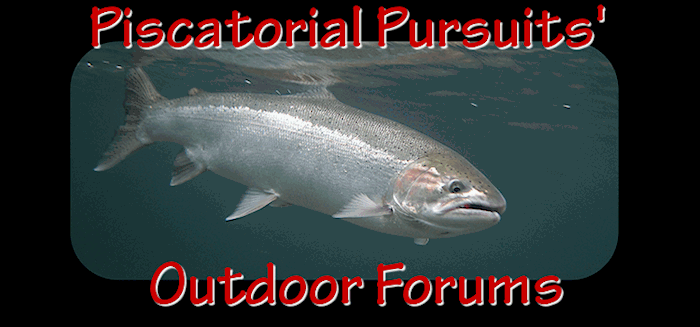Jim,
I agree to keep my discussion civil. The Cowlitz is an important fishery, and people are entitled to accurate information about “what is” and the best estimation of the “prospective future.”
The steelhead hatchery is improved with the ozone water treatment, but that is only a small fraction of the water supply and is used during the egg incubation and early rearing phase. The steelhead still spend the vast majority of their juvenile rearing in large ponds fed with raw river water that contains all the pathogens carried downstream from the salmon hatchery. I’ve heard both stories - that the steelhead smolts are healthy and that they aren’t. I believe the smolt to adult survival rate speaks for itself. Sometimes it is good, and sometimes it is very poor, even when other hatchery runs make a decent return. I don’t know of any other explanation than fish health. My opinion (not fact) is that if smolt quality was satisfactory, the adult returns would generally be much larger than we see, based on the huge - nearly 1 million - smolt release.
The 12,000 number as the mitigation target for all steelhead. is based on returns during the benchmark years of the late 1960s. That is the average number of steelhead that returned to the Mayfield dam site. That may also have included the catch estimate, but I’d have to check the records. The upshot is that Tacoma has agreed to continue using this number, subject to variation based on ocean survival rates. What that means is, when coastwide ocean survival is low, like during much of the 1990s, Tacoma’s obligation will be adjusted downward based on the proportional decrease in survival, just as it will be for chinook and coho. To smooth production out, this is to be based on five year rolling averages, instead of jerking production up and down on an annual basis. But the average obligation over time remains the same. I’m not sure, but the counting point for the 12,000 is probably “entering the mouth of the Columbia River.” It definitely will not be the number returning to the barrier dam. Tacoma has learned that there is a big difference between “run size” and returns to the barrier dam, and that fishing pressure today is a lot more than in 1960, so they would not agree to any mitigation plan that counts barrier dam returns, especially knowing the WDFW can rachett up the lower Columbia River gillnet fishery so that the required number of silvers never make it to the barrier dam, for instance.
No steelhead program is on the chopping block. The main limitation is the total tonnage of hatchery production that Tacoma agreed to. That tonnage is expected to meet 100% of Tacoma’s obligation even if the recovery and restoration programs upstream of the dams fails entirely. The hatchery tonnage can be allocated several different ways. The steelhead program makes up the largest % of the total tonnage production. One option to make more tonnage available for steelhead is to raise spring chinook to a size of 15 fish per pound (as recommended by every agency) instead of 5 per pound as insisted by WDFW. Some of this comes down to choices. WDFW feels that if something has to give within the hatchery program, they would reduce production of early winter steelhead for two reasons as I recall. First, according to WDFW, they are the least similar genetically, being predominantly Chambers Creek stock from south Puget Sound. Second, the typical high flows Tacoma generates during December and January (this year excepted apparently) makes for poor steelhead fishing conditions. The Skamania summer runs are also considered genetic “exotics” by WDFW, USFWS, and NMFS, but they are lower Columbia River, and therefore more closely related to native Cowlitz stock. That, and the better fishing conditions in the summer I believe is the reason given for prioritizing summer run production over the early winters. None of this in set in stone and remains subject to modification, I believe. What is fixed is that NMFS, along with WDFW, decided not to pass either the early winters or the summer runs upstream of the dams for natural production because they are not native fish, and the ESA requires the recovery of the native Cowlitz stock. So only late winters, which are believed to be derived from the native run according to WDFW, are passed above Cowlitz Falls Dam. That has included a mix the past few years of both wild and hatchery late winter steelhead. It’s still a small run, but it’s increasing. As natural production increases, you can expect several things. The run timing will expand to cover a longer time period of river entry, and the size of fish will vary more than the hatchery cookie cutter. Most wild fish will probably run 8 to 12 pounds, but there will be some smaller and some much larger.
Spawnout,
The recovery of Cowlitz steelhead, as well as coho and chinook, is focused on the upper river basin. There is more habitat of good quality in the upper basin than the lower basin in spite of decades of logging and road building. The lower river suffers from regulated flows, extensive dikes, levees, and rip rap that cut off side channels and sloughs that have a dramatic effect on productivity. The lower river is also laden with all the pathogens released from the hatcheries, and it remains a crapshoot whether really significant chinook and steelhead production will ever be possible in the lower river. Because of the focus on the upper river habitat, recovery is more contingent on successful downstream passage of juvenile fish than any other factor.
CFM,
I’m not all that hung up on the settlement agreement. For something designed by committee, I think it’s got a lot of good things. If you can only settle for something that “you” like, it ain’t gonna’ happen; there are so many stakeholders that settlements only happen with some compromise. As long as elements critical to fish mitigation and recovery are included, I don’t much care how goofy the rest of it is. I think NMFS is about a year overdue on the biological opinion, but that’s inevitable when the agency is required to issue more opinions than there are staff to write them.
Tacoma wants to implement as much of the new agreement as they can that doesn’t conflict with the existing license (annual renewal of old license), but WDFW doesn’t seem to be in such a rush from what I hear. But that’s hearsay and likely not relevant to a discussion of why early winter fish are making such a poor showing. I think Smalma explained how the planning process dates to 1999, before the agreement, that is responsible for the hatchery production that makes for this winter’s steelhead return. In years past, there has often been a correlation with the coho run and subsequent steelhead run. I’m not so sure that applies to the Cowlitz if returns are more closely correlated with the health of the smolt release. And frankly, I’m not sure if it really applies to coho and steelhead elsewhere except by coincidence. Coho migrate along the coast, usually not moving all that far offshore. Steelhead migrate slightly along the coast, but also move very far offshore, so the two species could experience very different ocean survival conditions if near shore and offshore survival factors vary significantly.
I think the response to Jim covered the ESA restriction. The fish health issue is my opinion based on the inference I’ve drawn from the information on steelhead performance on the Cowlitz compared to other locations. I’m not referencing any studies although there may be ample evidence to support a similar conclusion.
When you catch me at your secret honey hole you can set me straight all over again.
Sincerely,
Salmo g.














 Previous Topic
Previous Topic Index
Index

